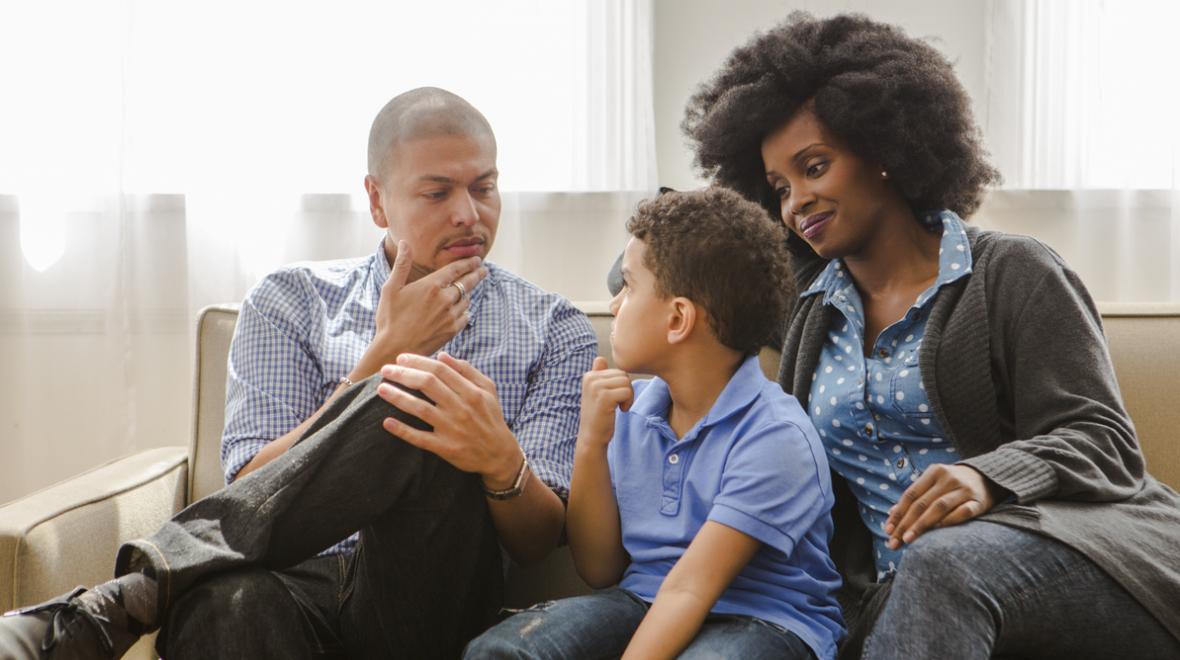
Big topics in the news have been coming fast and furious over the last year. Some of them whiz by our kids without notice, while others have our kids wanting to know more right away. The current debate over NFL players kneeling during the national anthem is one that piqued the interest of children quickly.
Some of us had strong feelings on the issue long before this week’s escalation, while others are thinking about this for the first time. Regardless, as the discussion in the media ramps up, our children have questions and we need to open the door for conversation.
Where do I start?
While sometimes we wish our kids could be blissfully unaware of the hard stuff, this is actually something to embrace. This protest — and the support and backlash that have followed — raise some really important topics we all should be talking about as a family, such as racism, social justice, free speech, respectful dialogue, the role of politics and our elected officials, and what it means to be part of a team. The conversation around these topics may look very different depending on the age of your children, but the framework for beginning these discussions can begin the same.
- Recognize that we have a big opportunity to model respectful communication. In a time of massive division in our country, we need to remember that the goal is not for everyone to have the same beliefs. It’s okay to disagree AND we can do so without destroying relationships. I encourage parents to teach their children that all emotions are ok, but we are each responsible for what we do with those emotions. For kids to really get that, they need to see us doing it. They are watching, whether we know it or not. When it comes to heated topics, it’s up to us to model how to have discussions where everyone present feels heard, and their views are respected even if they are not the same as our own. Bonus: If we can model this for our kids, they are more likely to discuss other hard topics with us in the future.
- Start where your child is. Younger children may have little awareness of current events while older kids may be having rich discussions in the classroom or with peers. Regardless, it’s always helpful to find out what they do know. Though unintentional, misinformation can spread quickly on the playground. It’s like the game of telephone, with the story changing as it passes from one child to the next. Add in the tabloids at the grocery check out line and the story running through their head may be more about space aliens protesting bowling balls than what is actually going on. Any time you are about to discuss a current event or hard topic, start with a question- “Have you heard anything about football players kneeling during the national anthem?” It doesn’t need to be a perfectly worded question, we are just attempting to find out what they have heard and bring them down from any major misinformation. This is NOT the time to express your views or tell them their views are right or wrong. This is the first of many opportunities for you to practice respectful listening.
- Frame the problem. While its easy to go right to taking a side or a stand, we can set up a truly open conversation by giving some context without jumping to judgment. Here’s how I might frame it: This is a protest by NFL players that began last year. As the protest grew this weekend, debate intensified around what the true meaning of kneeling during the national anthem. The conflict is about the meaning people are making of this action. Players and their supporters believe kneeling is a respectful way to protest the racism present in our society. They believe they are peacefully showing dissent and using free speech and their platform as athletes and sports stars to do so. Those opposed believe the players are showing disrespect for our country by not standing in the presence of the flag. Some believe that it is dishonoring military personnel who have risked their lives to protect the freedoms guaranteed in our constitution. With such different meanings being made, it is easy to see how this issue has quickly escalated.
- Ask questions and share ideas. This is the heart of the conversation, and a time to really pay attention to airtime. I have been known to have strong opinions at times, and can be off on a rant before I realize it. If we are going to model healthy ways of sharing opinions, we have to be willing to listen just as much as we talk. Start by asking what they think of the issue and share your own perspective. It’s important to not judge their perspective, as that closes the door to open dialogue. It also conveys a really important message: we are each entitled to our own opinion and the willingness to listen to differing opinions helps us understand each other. We can agree or disagree and still remain connected. As your children head to the teen years, this is a really great foundation to have in place.
The opportunities are endless for where your discussion may go. Here are some ideas and questions to get you started:
- Talk about race in America, the experience of people of color and oppressed populations. How does the experience of marginalized populations shape their sense of belonging in this country?
- What is a protest? Looking back to the start of this protest with Colin Kaepernick, how has this movement grown? How does it compare to other times of protest and dissent in our history? What does kneeling represent?
- What is free speech? Is there a difference between free speech and hate speech?
- What role do elected officials and government have in this conflict? Should they have a role? How can they support differences of opinion while still helping our country heal the divisiveness that is present?
- What role do sports play in our community? What about professional sports? Do sports stars have a responsibility to be role models?
- What does it mean to be a part of a team? Has there been a time when you disagreed with teammates? How do you move through that and still feel a part of the team?
- How do we show pride in our country? Can we be both proud and want change?
- What role does the military take in protecting our rights? How do we show support for them?
- How do we have meaningful conversations that connect us, instead of divide us? What mediums are more helpful than others- face to face, email, social media?
- How do we hear others with empathy and without judgment? How do we share our own views in a respectful way? Can we remain connected even if we disagree?
- Do your feelings about any of these raise a call to act? If so, what are ways you can engage around these issues? Which ways create connection? Which ways divide?
Take it slow
These questions address a wide range of topics that may come up in relation to the NFL protest. These certainly do not all need to be discussed, nor are they meant for a single conversation. You may find these same topics useful in discussing other current events as they arise.
Find the small moments that arise as you observe something related to these topics. Car rides, family dinners, are both easy times for most families to discuss current events. As much as we need to listen to what our children have to say, we also need to respect when they are not interested. With teens and tweens, sharing articles and podcasts are a good way to introduce a topic and then discuss as a family.
I frequently hear parents asking, “What if I don’t say the right thing? What if I can’t answer their questions?” The truth is, we don't have to be perfect and we don't have to have all the answers. We just have to be willing to listen, to model respectful exchange of ideas and trust that teaching our kids how to do this is more important than having a perfect response.











